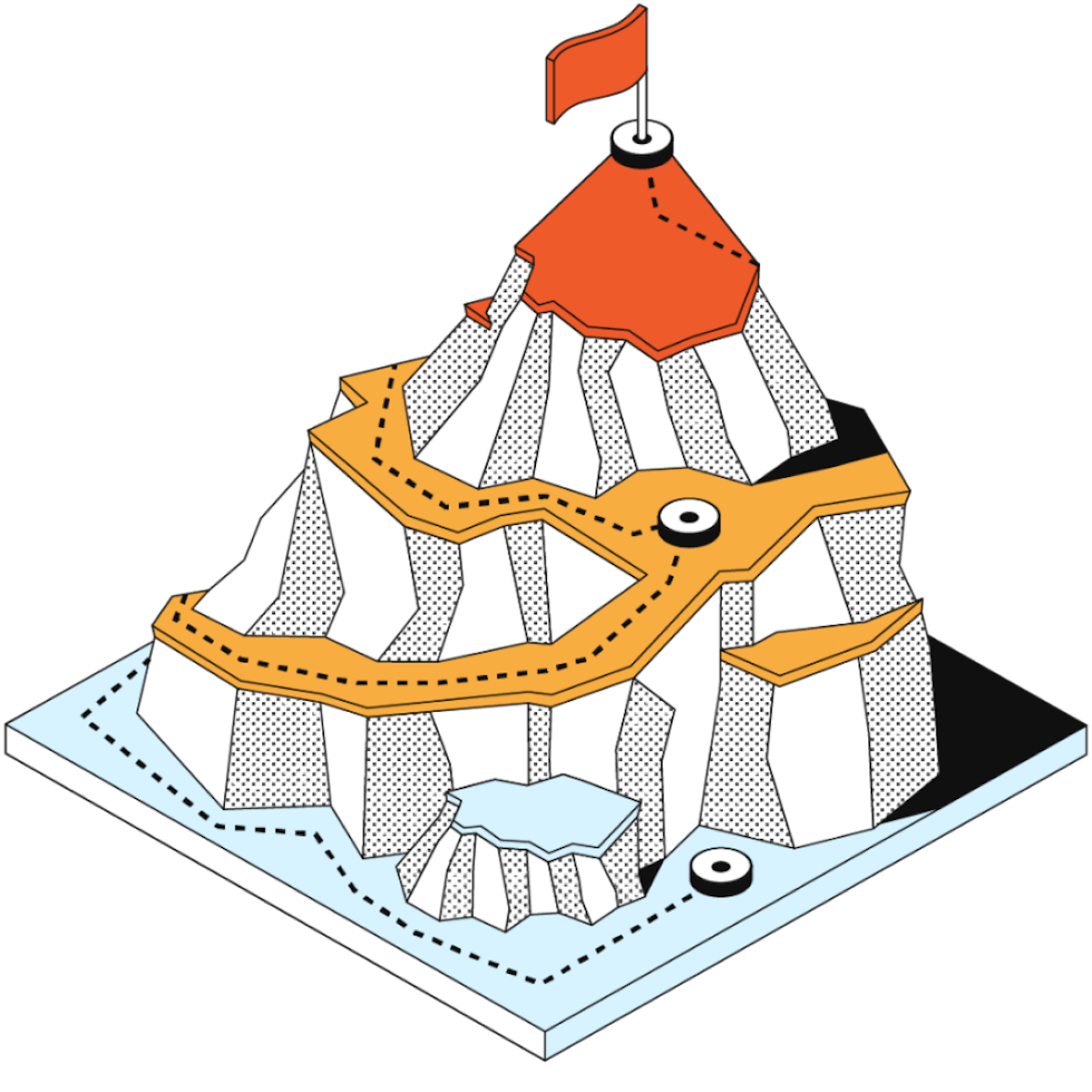Six real-world OKR examples to use for your team’s goal-setting
Inspiration for successful strategic planning.


The Coda team
The power of OKRs lies in their adaptability. We all have goals, and an OKR is simply a way to state your top priorities and distill them into key results that are measurable and realistic. Think of OKRs as formulas. Objectives are your goals and intents — the things you aspire to accomplish. Key results are deadline-driven, measurable milestones that tie directly to your goals and intents. Every organization is different, multi-layered, and nuanced. But simplicity is key. Your challenge is to convert the mighty ambitions of your team into the “North Star” — the thing that will anchor your company’s long-term success. Your OKR should look something like this: Objective: Your significant, action-oriented goal here. Key results:
- How will you follow your company’s “North Star?”
- Specific, time-sensitive, and measurable.
- Keep it to one-line.

Most recently, Doerr spoke about Millennials using OKRs at Whole Foods:
“Somebody recently told me that at Whole Foods, he noticed Millennial workers checking their OKRs on their mobile phones. That makes sense, because Millennials tend to want to know how their own work figures into the big picture, and they want nearly constant feedback, but without being micromanaged.” - John Doerr
- Have a maximum of 5 objectives with 4 key results. If a quarter is 12 weeks, it’s unlikely that someone can handle working on 12 objectives. Limiting the number of objectives with clear key results helps move the needle to success.
- OKRS from the bottom, up. Too much top-down dictation of objectives makes it difficult to inspire people because they’re being told what to do. Instead, let them tell you what they believe is the best use of their time and talent.
- One page is best. When the OKR framework was written, it was in the era of printing. Thankfully, tools like Coda provide you a way to get all of these OKRs into one table with visibility for your team and company.
- OKRs are not a performance evaluation tool. OKRs should not be an element of any evaluation program. However, from an individual reflection standpoint, these OKRs do show your most dramatic results and the work you accomplished can summarize contributions and impact to the company.
Company OKR examples
SMART goals are specific and narrow so that it’s clear what you’re trying to achieve. Business objective: Launch a new product. Key results:
- Achieve target of 80% customers using app within 1 month of launch.
- Hit 60% retention rate for subscribers.
- Achieve ARPDAU > $.15.
Business objective: Grow our customer base. Key results:
- Increase new customers by 25%.
- Increase NPS score to >98%.
- Reduce churn to <5%.
Product OKR examples
Business objective: Deliver new iOS app. Key results:
- Finish MVP by August 1st.
- Complete beta testing by September 1st.
- Publish in App Store by October 1st.
Business objective: Run better team meetings. Key results:
- Send pre-reads the day before every meeting.
- 100% of meetings end on time.
- Team sentiment increases to 100%.
Marketing OKR examples
Business objective: Build relationships with social media influencers. Key results:
- Draft briefs for 5 potential promotional campaigns.
- Reach out to at least 5 influencers each week.
- Repackage micro-content for at least 10 blog posts.
Business objective: Increase content on the first page of Google SERP. Key results:
- Conduct SEO audit by August 1st.
- Audit existing blog posts with SEO tool and optimize.
- Build alt text and title system for images.
Sales OKR examples
Business objective: Break revenue records. Key results:
- Increase quarterly profit by 15%.
- Increase quarterly revenue by 20%.
- Increase app subscriptions by 65%.
Business objective: Decrease sales lifecycle. Key results:
- Reduce sales cycle from 90 to 75 days.
- Conduct 150 new sales calls.
Customer success OKR examples
Business objective: Improve customer support. Key results:
- Launch a new live chat program by August 1st.
- Increase NPS score to >98%.
- Reduce response time to <4 hours.
Business objective: Improve the customer success team. Key results:
- Hire 3 customer support leads.
- Hire 2 community managers.
- Implement customer success team onboarding program focused on customer experience.
Engineering OKR examples
Business objective: Build an effective engineering team. Key results:
- Establish new referral program by August 1st.
- Hire 5 senior full stack engineers by end of quarter.
- 2x the onsite-to-hire ratio.
Business objective: Increase development speed. Key results:
- Reduce the number of bugs per feature by 10%.
- Reduce review time by 25%.
- Increase sprint velocity points by 5%.












